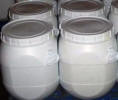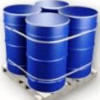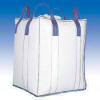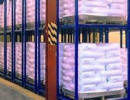| Anmol Chemicals is the pioneer manufacturers of Phosphoric Acid, Pharmaceutical Excipients Food & Flavor chemicals in India. We supply Halal and Kosher Phosphoric Acid made in an ISO9001, ISO22000 (FSSC22000) cGMP and GLP certified facility. Our group has several manufacturing facilities spread across the world, supported by toll manufacturers and representatives in UAE, Europe, Africa, USA, China and has several associated manufacturing facilities spread across India. All the Information on Physics, Chemistry, Applications, Uses and Technology on Manufacture of Phosphoric Acid is in these pages. |
| The units have one or more of the certifications like FDA GMP, ISO 9001, ISO 22000, HACCP, REACH, Kosher & Halal |





Phosphoric Acid SDS MSDS Sheet of Manufacturers
Phosphoric Acid SDS MSDS Sheet of Manufacturers. YOU ARE HERE.
Phosphoric Acid FCC Food Grade
Phosphoric Acid ACS Reagent Grade
Phosphoric Acid SDS MSDS Sheet, Material Safety Data Sheet
Section 1: Product Identification
Synonyms: Phosphoric Acid
CAS Number 7664-38-2
EINECS EC Number: 231-633-2
Molecular Weight: 98
Chemical Formula: H3PO4
Relevant identified uses of the substance or mixture and uses advised against: Laboratory chemicals, Manufacture of substances. For Industrial use.
Details of the supplier of the safety data sheet: As per letter head.
Section 2: Hazard Identification
GHS, Globally Harmonized System Classification in accordance with 29 CFR 1910
Classification according to Regulation (EC) No 1272/2008
Corrosive to Metals Category 1
Skin corrosion/irritation Category 1A, B, C
Labeling according Regulation (EC) No 1272/2008
GHS Label Elements  Corrosive |
Signal Words: Danger
Hazard statements:
H290: May be corrosive to metals
H314: Causes severe skin burns and eye damage
Precautionary statements:
P234: Keep only in original container.
P260: Do not breathe dust/fume/gas/mist/vapors/spray.
P264: Wash … thoroughly after handling.
P280: Wear protective gloves/protective clothing/eye protection/face protection.
P312: Call a POISON CENTER or doctor/physician if you feel unwell.
P362: Take off contaminated clothing and wash before reuse.
P303+361+353: IF ON SKIN (or hair): Remove/Take off immediately all contaminated clothing. Rinse skin with water/shower.
P305+351+338: IF IN EYES: Rinse cautiously with water for several minutes. Remove contact lenses if present and easy to do – continue rinsing.
P501: Dispose of contents/container to authorized agents only.
Section 3: Composition / Information on Ingredients
Ingredient: Phosphoric Acid
CAS No.: 7664-38-2
EINECS EC Number: 231-633-2
Percent: 99 - 100%
Section 4: First Aid Measures
Always seek medical attention after first aid measures are provided.
Eye Contact: Check for and remove any contact lenses. In case of contact, immediately flush eye with plenty of water for at least 15 minutes. Cold water may be used. Get medical attention immediately.
Skin Contact: Immediately flush skin with plenty of water for at least 15 minutes while removing contaminated clothing and shoes. Call a physician, immediately. Wash clothing before reuse..
Ingestion: If swallowed, do not induce vomiting unless directed to do so by medical personnel. Never give anything by mouth to and unconscious person. Loosen tight clothing such as a collar, tie, belt or waistband. Get medical attention immediately.
Medical Conditions generally Aggravated by Exposure: Repeated exposure of the eyes to a low level of Sodium hydroxide dust can produce eye irritation. Repeated skin exposure can produce local skin destruction, or dermatitis. Repeated inhalation of dust can produce varying degree of respiratory irritation or lung damage.
Section 5: Fire Fighting Measures
Flash Point: NA
Fire Extinguishing Media: Adapt extinguishing media to the environment. Use water spray, alcohol-resistant foam, dry chemical or carbon dioxide.
Special Fire Fighting Procedures: Wear self contained breathing apparatus for firefighting if necessary.
Unusual Fire and Explosion Hazards: Flammable hydrogen gas may be produced on prolong contact with metals such as aluminum, tin lead and zinc.
Section 6: Accidental Release Measures
Steps to be Taken in Case Material is Released or Spilled: Evacuate the area of all unnecessary personnel. Wear suitable protective equipment. Eliminate any ignition sources until the area is determined to be free from explosion or fire hazards. Contain the release and eliminate its source, if this can be done without risk. Take up and containerize for proper disposal. Comply with local, state and Federal regulations on reporting releases. Refer to regulatory information for reportable quantity and other regulatory data.
Methods for cleaning up: Take up liquid spill into absorbent material, e.g.: dry sand/earth or powdered limestone. Scoop absorbed substance into closing containers. Carefully collect the spill/leftovers. Small quantities of liquid spill may be neutralize with acid solution. Wash away neutralized product with plentiful water. Clean contaminated surfaces with an excess of water. Take collected spill to manufacturer/competent authority. Wash clothing and equipment after handling.
Waste Disposal Methods: Dispose of waste according to Federal, State and Local Regulations.
Section 7: Handling and Storage
Keep in a tightly closed original container. Protect from physical damage. Store in a cool, dry, ventilated area away from sources of heat, moisture and incompatibilities. Containers may be hazardous when empty since they retain product residues; observe all warnings and precautions listed for the product.
Section 8: Exposure Controls / Personal Protection
Components with workplace control parameters
USA ACGIH TWA: 1 mg/m³
USA OSHA: 1 mg/m³ OSHA PEL (TWA) (mg/m³)
Engineering Controls Ventilation required: It should be handled or transferred in an approved fume hood or with adequate ventilation.
Personal Protection Equipment
Respiratory protection: If workplace exposure limit (s) of product or any component is exceeded (see TLV/PEL), a NIOSH/MSHA approved air supplied respirator is advised in absence of proper environmental control. OSHA regulations also permit other NIOSH/MSHA respirator (negative pressure type) under specified conditions (see your safety equipment supplier). Engineering and/or administrative controls should be implemented to reduce exposure.
Protective gloves: Nitrile or equivalent.
Skin protection: Impervious, protective clothing.
Eye protection: Safety glasses with side shields must be worn at all times.
Additional clothing and/or equipment: Eyewash and safety equipment should be readily available.
Handle in accordance with good industrial hygiene and safety practice. Wash hands before breaks and at the end of workday.
Section 9 Physical and Chemical Properties
Appearance and Physical State: Phosphoric Acid 85% a clear colorless is liquid.
Odor (threshold): Odorless.
Specific Gravity (H2O=1): 1.6 to 1.7
Vapor Pressure (mm Hg): 1 - 4 mm Hg at 15.5C (60F)
Melting Point: 21C
Boiling Point: 158C
pH: 1-1.5 at 50gm/liter
Solubility in Water: Soluble
Section 10: Stability and Reactivity
Stability: It is stable under ordinary conditions of use and storage.
Reactivity: Exothermic reaction with water. Reacts with metals to release hydrogen.
Materials to Avoid (Incompatibility): Strong bases, Powdered metals.
Hazardous Decomposition Products: Thermal decomposition may produce toxic fumes of phosphorus oxides and/or phosphine.
Hazardous Polymerization: Will not occur.
Section 11: Toxicological Information
Results of component toxicity test:
LD50 (rat): 1,530 mg/kg (anhydrous) (IUCLID)
LD50 (rabbit): 2,740 mg/kg (anhydrous)(IUCLID)
Carcinogenicity: This product is not classifiable as to its carcinogenicity based on its IARC, ACGIH, NTP, or EPA classification.
Symptoms of overexposure: Coughing. Dry/sore throat. Irritation of the respiratory tract. Irritation of the nasal mucous membranes. FOLLOWING SYMPTOMS MAY APPEAR LATER: Respiratory difficulties. Risk of lung oedema. Burns to the gastric/intestinal mucosa. Nausea. Abdominal pain. Blood in vomit. AFTER ABSORPTION OF HIGH QUANTITIES: Shock.
Section 12: Ecological Information
Toxicity to fish:
LC50 fishes 1: 138 mg/l (96 h; Pisces; Pure substance)
LC50 fish 2: 100 - 1000 mg/l (Pisces; Pure substance)
LC50 other aquatic organisms 1: 100 - 1000 mg/l (96 h; Protozoa; Pure substance)
The product may affect the acidity (pH-factor) in water with risk of harmful effects to aquatic organisms.
Results of PBT and vPvB assessment: This substance/mixture contains no components considered to be either persistent, bioaccumulative and toxic (PBT), or very persistent and very bioaccumulative (vPvB) at levels of 0.1% or higher.
Section 13 Disposal Considerations
State and local laws governing disposal of materials can differ. Ensure proper disposal compliance with proper authorities before disposal.
Section 14: Transportation Information
USA DOT & ADR/RID:
Proper shipping name: Phosphoric acid solution
Hazard Class: 8
Packaging group: III
UN Number: UN1805
IATA:
Proper shipping name: Phosphoric acid solution
Hazard Class: 8
Packaging group: III
UN Number: UN1805
IMO:
Proper shipping name: Phosphoric acid solution
Hazard Class: 8
Packaging group: III
UN Number: UN1805
Section 15: Regulatory Information
USA:
SARA Section 311/312 Hazard Classes: Immediate (acute) health hazard
SARA 302 Extremely Hazardous Substance: None present or none present in regulated quantities.
SARA 313 (TRI Reporting): None present or none present in regulated quantities.
TSCA 8(b) inventory: Listed
California Proposition 65: None
Canada WHMIS: CLASS E: Corrosive solid.
Canada DSL: Listed.
Section 16: Other Information
DISCLAIMER: The information and recommendations set forth herein (hereinafter "Information") are presented in good faith and believed correct as of the date hereof. It is compiled from various sources and it is not necessarily all inclusive nor fully adequate in every circumstance. In addition, these suggestions should not be confused with nor followed in violation of applicable laws, regulations, rules or insurance requirements applicable. This MSDS sheet is intended only as a guide to the appropriate precautionary handling of the material by a properly trained person using this product. Individuals receiving the information must exercise their independent judgment in determining its appropriateness for a particular purpose.
Manufacturers
Anmol Chemicals
S-8, SARIFA MANSION, 2ND FLANK ROAD, CHINCHBUNDER, MUMBAI 400009, INDIA
TEL: (OFFICE) 91-22-23770100, 23726950, 23774610, 23723564. FAX: 91-22-23728264
e-mail: anmolc@mtnl.net.in

Exports to USA, Canada, UAE, Dubai, South Africa, Tanzania, Kenya, Nigeria, Egypt, Uganda, Turkey, Mexico, Brazil, Chile, Argentina, Europe Netherlands, Italy, Spain, Germany, Portugal, France, Malaysia, Indonesia, Thailand, Vietnam, Korea, Japan, etc.
Copyright and Usual Disclaimer is Applicable. 29 January, 2022
Barter
They who love thee on this earth, keep calling on thee and chanting thy beads
Lest thou forgetest.
They assign the credit of their hard work to your blessings
They keep you amused.
They come to thy temple with baskets of fruits, as if you were a glutton
They deny the same to their children.
They offer you milk for a bath and burn the ghee
They hardly understand the meaning of it.
They bring gold and diamonds. They come with beating of drums
They love to advertise their offerings.
They offer you a small bribe as advance for booty, called lottery
They love to dream.
I do not bow down at your door
I do not bargain for booty
Your promise of the heaven does not lure me
Your hell-fire does not scare me
I do not even know the proper method of prayer
I do not offer any thing to you
Ages have gone by and I have not seen you my lord
Yet my love for you keeps waiting for you